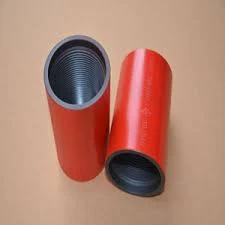- Afrikaans
- Albanian
- Amharic
- Arabic
- Armenian
- Azerbaijani
- Basque
- Belarusian
- Bengali
- Bosnian
- Bulgarian
- Catalan
- Cebuano
- Corsican
- Croatian
- Czech
- Danish
- Dutch
- English
- Esperanto
- Estonian
- Finnish
- French
- Frisian
- Galician
- Georgian
- German
- Greek
- Gujarati
- Haitian Creole
- hausa
- hawaiian
- Hebrew
- Hindi
- Miao
- Hungarian
- Icelandic
- igbo
- Indonesian
- irish
- Italian
- Japanese
- Javanese
- Kannada
- kazakh
- Khmer
- Rwandese
- Korean
- Kurdish
- Kyrgyz
- Lao
- Latin
- Latvian
- Lithuanian
- Luxembourgish
- Macedonian
- Malgashi
- Malay
- Malayalam
- Maltese
- Maori
- Marathi
- Mongolian
- Myanmar
- Nepali
- Norwegian
- Norwegian
- Occitan
- Pashto
- Persian
- Polish
- Portuguese
- Punjabi
- Romanian
- Russian
- Samoan
- Scottish Gaelic
- Serbian
- Sesotho
- Shona
- Sindhi
- Sinhala
- Slovak
- Slovenian
- Somali
- Spanish
- Sundanese
- Swahili
- Swedish
- Tagalog
- Tajik
- Tamil
- Tatar
- Telugu
- Thai
- Turkish
- Turkmen
- Ukrainian
- Urdu
- Uighur
- Uzbek
- Vietnamese
- Welsh
- Bantu
- Yiddish
- Yoruba
- Zulu
Seamless Pipe Applications and Benefits in Modern Engineering Projects
The Seamless Pipe An Engineering Marvel
In the realm of manufacturing and construction, seamless pipes have emerged as a vital component used across various industries, including oil and gas, automotive, and construction. Unlike traditional welded pipes, seamless pipes are produced without any joints, which gives them distinct advantages in terms of strength, durability, and overall performance.
Manufacturing Process
The production of seamless pipes typically involves a process known as rotary piercing followed by elongation. This method begins with a solid steel billet that is heated to a high temperature. The heated billet is then passed through a rotary piercer to create a hollow pipe shell. This shell is further elongated and reduced to the desired length and diameter through a series of processes, including elongation and finishing. The end result is a pipe that has no seams or welds, making it ideal for high-pressure applications.
Seamless pipes are made from a variety of materials, including carbon steel, stainless steel, and alloy steel. This versatility in material choice allows them to be tailored to specific applications, enhancing their utility across different sectors.
Applications
The applications of seamless pipes are vast. In the oil and gas industry, they are critical for transporting fluids under high pressure and temperature. Their seamless construction significantly reduces the risk of leaks, making them a preferred choice for pipelines, drilling rigs, and refineries.
In the automotive sector, seamless pipes are commonly used in the production of exhaust systems, hydraulic cylinders, and various structural components. Their ability to withstand high temperatures and pressures ensures that they can perform reliably under rigorous conditions.
seamless pipe

Construction projects also benefit from seamless pipes, particularly in structural applications. Their high strength-to-weight ratio allows for the creation of lighter yet robust frameworks, making them ideal for use in bridges, buildings, and other infrastructures.
Advantages
The primary advantage of seamless pipes lies in their inherent strength. Without seams, the risk of failure due to weak points is minimized, allowing them to withstand higher pressure and temperature fluctuations. This characteristic is especially crucial in high-risk environments such as oil rigs and chemical plants, where failures can lead to catastrophic consequences.
Moreover, seamless pipes exhibit uniformity and consistency in wall thickness, which enhances their reliability. This ensures that they can be used in precision applications, where even minor defects can compromise the integrity of the system.
Another significant benefit is their resistance to corrosion and wear. Depending on the material chosen, seamless pipes can be engineered to resist various forms of corrosion, making them suitable for transporting aggressive fluids, such as acids and gases.
Conclusion
In conclusion, seamless pipes represent a pivotal innovation in the field of piping solutions. With their superior strength, reliability, and versatility, they are indispensable in various industries where safety and efficiency are paramount. As technology continues to evolve, the manufacturing processes of seamless pipes are likely to improve, further enhancing their performance and applications. The future looks bright for seamless pipes as they continue to play a crucial role in supporting the infrastructure that fuels our modern world.
-
Tubing Pup Joints: Essential Components for Oil and Gas OperationsNewsJul.10,2025
-
Pup Joints: Essential Components for Reliable Drilling OperationsNewsJul.10,2025
-
Pipe Couplings: Connecting Your World EfficientlyNewsJul.10,2025
-
Mastering Oilfield Operations with Quality Tubing and CasingNewsJul.10,2025
-
High-Quality Casing Couplings for Every NeedNewsJul.10,2025
-
Boost Your Drilling Efficiency with Premium Crossover Tools & Seating NipplesNewsJul.10,2025







